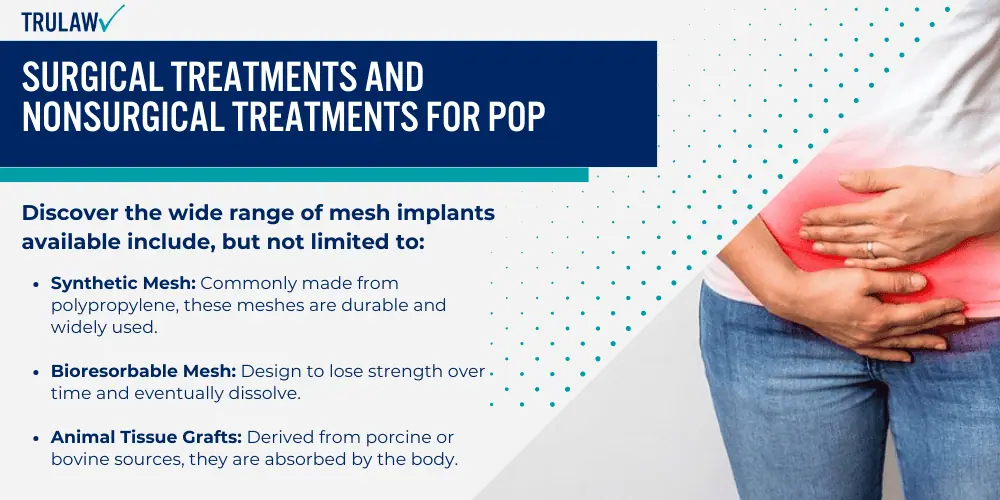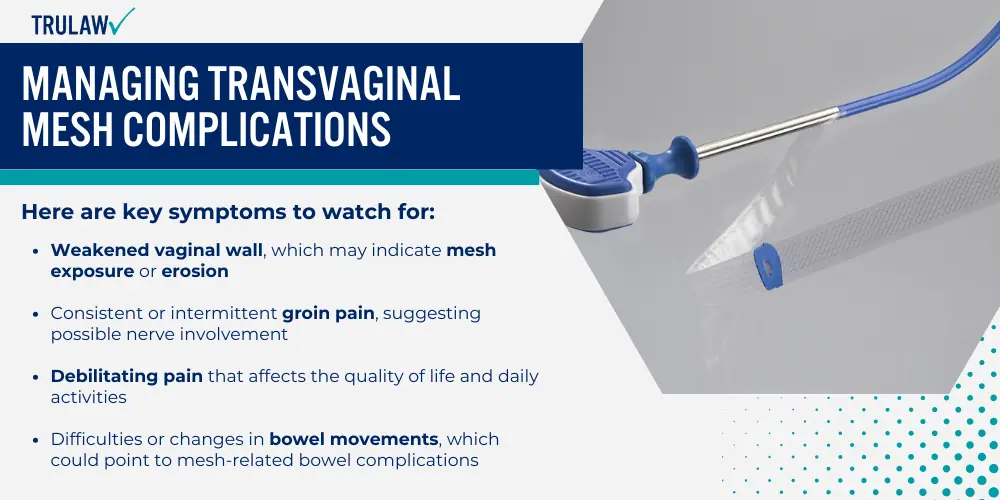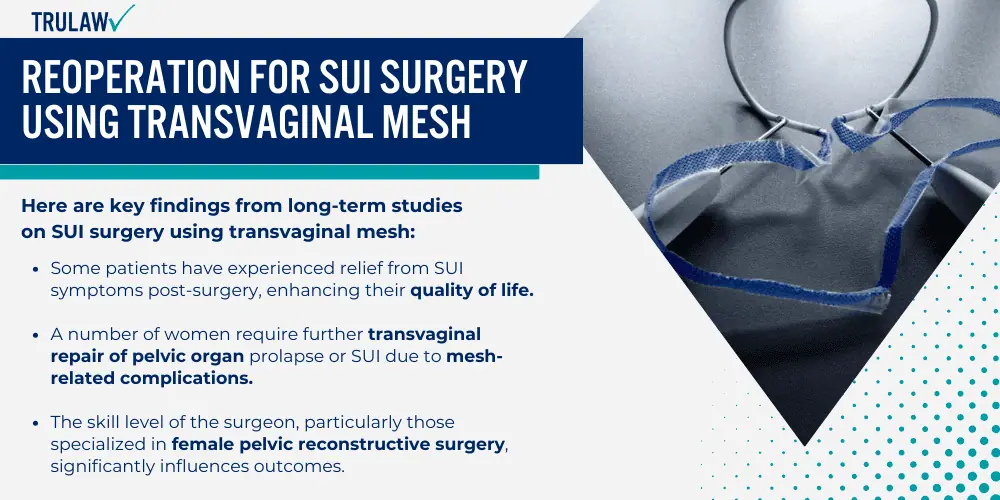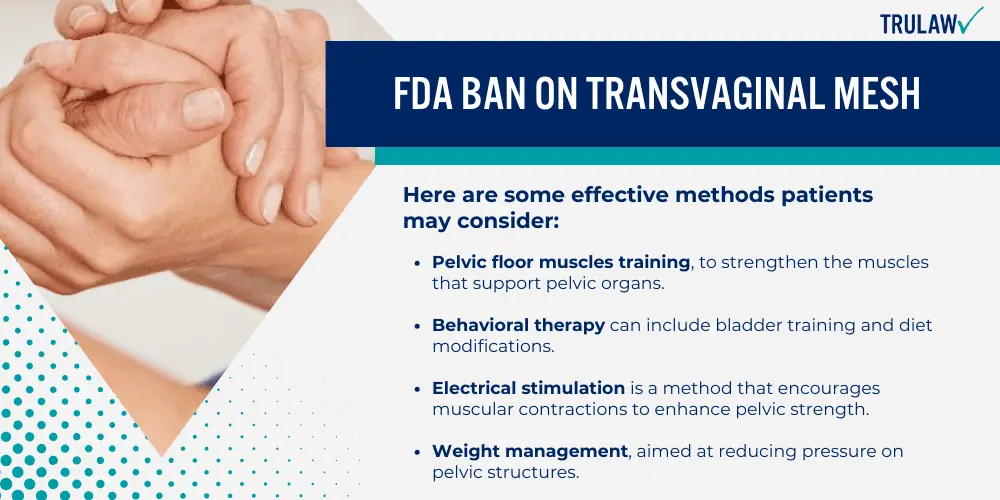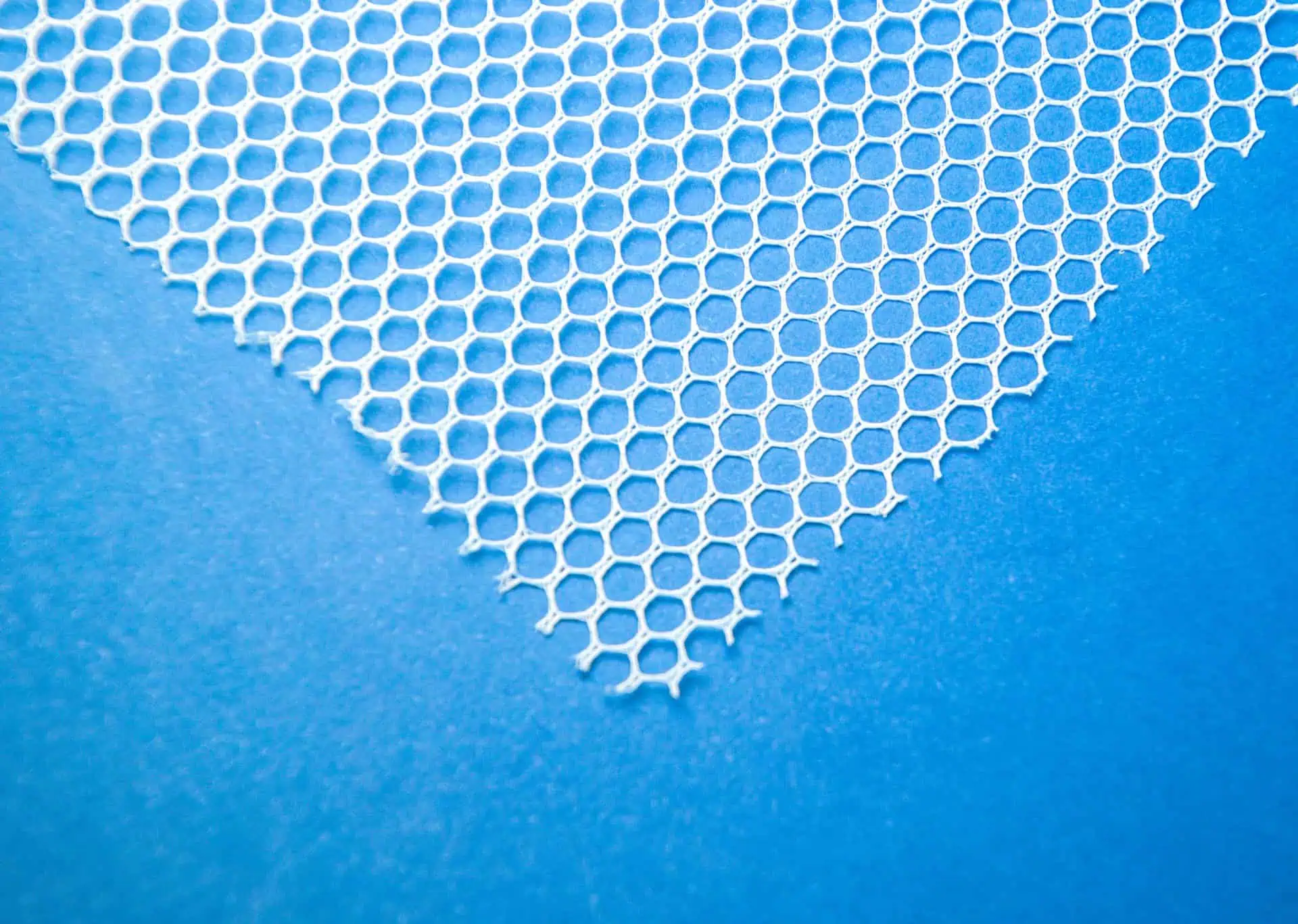Transvaginal mesh is utilized in female pelvic reconstructive surgery to provide support to weakened pelvic structures.
This medical intervention addresses a range of pelvic floor disorders.
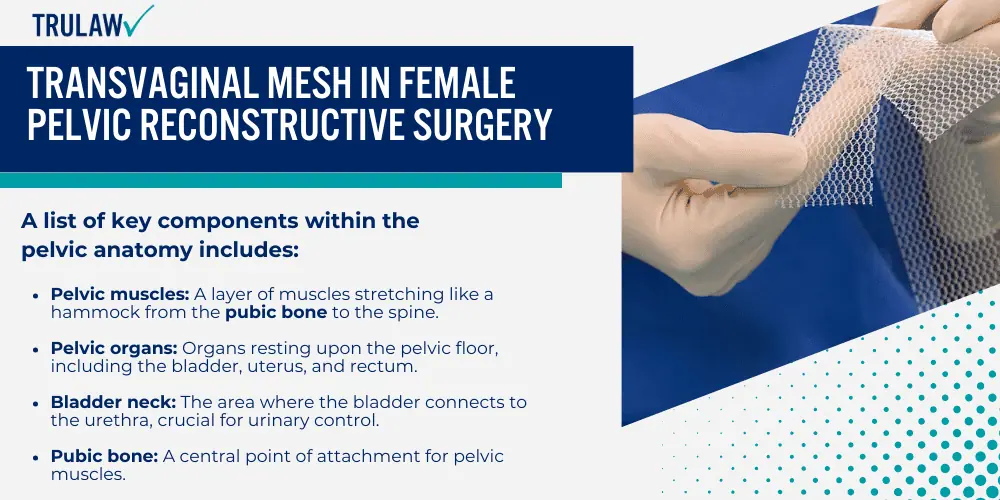
The Pelvic Anatomy
The pelvic region consists of a complex network of muscles, bones, and organs.
Pelvic muscles provide support to the pelvic organs, including the bladder, bowel, and uterus.
The pubic bone at the front and the spine at the back frame the pelvic floor, with the bladder neck positioned at the front of the pelvic region.
A list of key components within the pelvic anatomy includes:
- Pelvic muscles: A layer of muscles stretching like a hammock from the pubic bone to the spine.
- Pelvic organs: Organs resting upon the pelvic floor, including the bladder, uterus, and rectum.
- Bladder neck: The area where the bladder connects to the urethra, crucial for urinary control.
- Pubic bone: A central point of attachment for pelvic muscles.
Common Pelvic Floor Disorders
Pelvic floor disorders encompass a variety of conditions that affect the support and function of the pelvic floor.
Stress urinary incontinence and pelvic organ prolapse are two prominent examples.
Stress urinary incontinence is characterized by the unintentional leakage of urine during physical activity, while pelvic organ prolapse occurs when pelvic organs drop from their normal position into or through the vaginal canal due to weakened support structures.
The common pelvic floor disorders include:
- Pelvic organ prolapse: A downward displacement of the pelvic organs.
- Stress urinary incontinence: Uncontrolled urine leakage prompted by pressure exertion on the bladder.
- Pelvic pain: Discomfort that may be associated with underlying pelvic floor disorder.
- Pelvic floor disorder: Any disorder that affects the integrity and function of the pelvic floor muscles and tissues.

